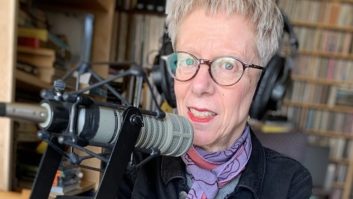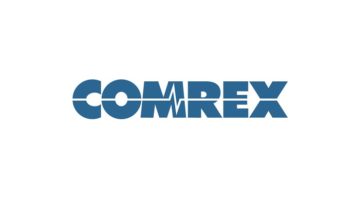
This is one in a series of Q&As about trends in the broadcast codec technology arena. Here we talk with Gustavo Robles, director of international sales at AEQ. Replies were via email and have been edited for length.
RW: Your company recently passed its 20th year. What’s the most notable recent improvement in codec technology for radio broadcasters?
Robles: Indeed AEQ has been working in the broadcast communications market for many years. We began in 1984 with the TH01 telephone hybrid and ACD3001 professional ISDN codec, developed for 1994 World Cup in the U.S.A. Interestingly, there are no ISDN networks in Spain so we had to move the R&D team to our laboratory in our Miami offices.
Today the main trend is for equipment that handles newer technologies such as IP networks. Traditionally, broadcasters and broadcast equipment manufacturers had to consider both the signal path or network and the application of their equipment. This is obvious if we compare, for example, broadcast audio codecs that offered many features but were dedicated to point-to-point operation and utilized one type of network such as V35, T1, E1, ISDN. But IP technology has changed that through its extensive development, enormous geographic availability and low prices for service.
Over the last five years broadcasters and manufacturers have taken to these “new” IP networks.
We have found that IP as a pathway usually offers very reasonable bandwidth with an almost global availability and a minimum cost of access in most scenarios. This makes it perfect for radio and TV applications.
But this remarkable change is not problem-free. Broadcast staffers and codec users have had to learn to become IT administrators, when in the past they only had to know a few things about the dedicated networks they used. For their part, manufacturers have had to face new challenges such as firewalls, variable bandwidths, packet loss, jitter, NATs … inherent in working over a non-dedicated packet-switching networks such as the Internet or other IP-based networks.
But a manufacturer of professional audio codecs such as AEQ has to meet the expectations of customers, which means massive research and development efforts in contemporary technologies such as adaptive buffers, robust and efficient coding algorithms, error correction, signalling protocols … all in order to make network complexity invisible to the user.
RW: What’s the “state of the art” in algorithms?
Robles: Right now there are many algorithms in the market: free and proprietary, some specializing in big bandwidths while others navigate challenged lines; there are different levels of delay to be considered as well. Each proclaims its corresponding benefits for each scenario.
Historically AEQ has tried to incorporate the most standard algorithms in our equipment — from the universally accepted G.711 or G.722, through the MPEG family up to the excellent new AAC generation today — in the conviction that it offers more business opportunities because it allows end users better operation and doesn’t lock them into a specific brand or hardware commitment.
From the AES3 digital audio standard, through AES10 MADI multichannel standard or the new “equivalent” AES67 for AoIP networks, up to N/ACIP for interoperability of IP audio codecs, AEQ products are designed on open and widely accepted standards.
With these considerations in mind, once we reviewed the algorithm options available, and thinking medium- to long-term, we believe that the most efficient, most flexible, best performing and nonproprietary choice was the Opus codec. So all of AEQ’s the departments involved in design, development and creation of new audio codecs are now focused on Opus. We are convinced that it represents the perfect solution for our customers, considering that it is an open source algorithm, supports flexible bandwidth, and is suitable for both high and low bitrates. In our tests is has provided excellent audio quality.
RW: How has the dramatic evolution of the Internet changed the challenges that face you as a codec manufacturer?
Robles: In a radical way.
In the last two decades AEQ and other manufacturers have faced the challenge of creating audio codecs designed for dedicated lines with a guaranteed quality of service. Our experience showed once the communication was established, the connection remained very stable, with good audio quality and excellent rates of error-correction. This allowed manufactures to focus on improving a codec’s features and technical specifications.
But now the arrival of the Internet and other IP networks in the broadcast sector has created a disruptive environment. One new problem is that packet-switching networks have their own potential problems: packet loss, non-dedicated bandwidth, jitter, confusion in packet order. Manufacturers such as AEQ must solve these in order to provide solutions for our customers that operate as well their previous codecs but add the advantages of the new IP communications technology.
Thanks to IP networks and the Internet as a global force, professional audio links have significantly reduced the costs of installation, operation and maintenance in comparison to the “traditional” dedicated networks.
In addition, this development in IP networks allows AEQ to develop in remote supervision and monitoring tools that take advantage and communicate with devices connected to the IP network. These offer an incredible new world of options to the end users in the operation, maintenance, control, configuration and repair of their equipment.
RW:Important new products from AEQ as we come into spring NAB season?
Robles: Our plans include developments in our four main lines of work: mixing, communications, automation and audio-for-sports-events.
We are introducing the AEQ Capitol IP, an evolution of the standard AEQ Capitol control surface. It offers AoIP multichannel communication capabilities over IP networks, as well as the new BC221432-channel AoIP communications module for our AEQ BC2000D network platform.
We are also introducing the Systel IP VoIP multiline talk show system. After the summer we want to release a new IP audio codec, the AEQ Stratos, an evolution of the AEQ Phoenix Studio, now with a set design and improved price point.
We’ll also see the AEQ AudioPlus automation system for radio. It now has an automatic programming module.
And the AEQ NAB Show booth, C3027, will feature our new audio commentary system, AEQ Olympia. It was used by all the broadcasters at the 2014 Winter Olympic Games in Sochi, Russia.











